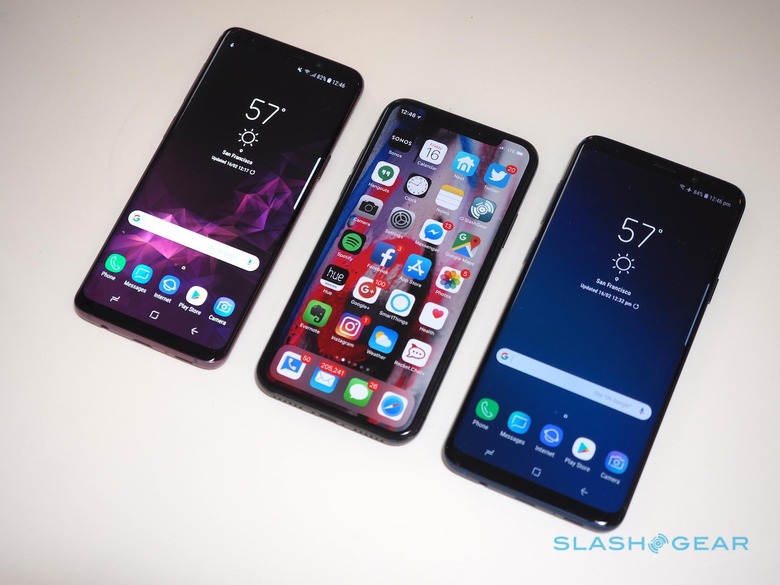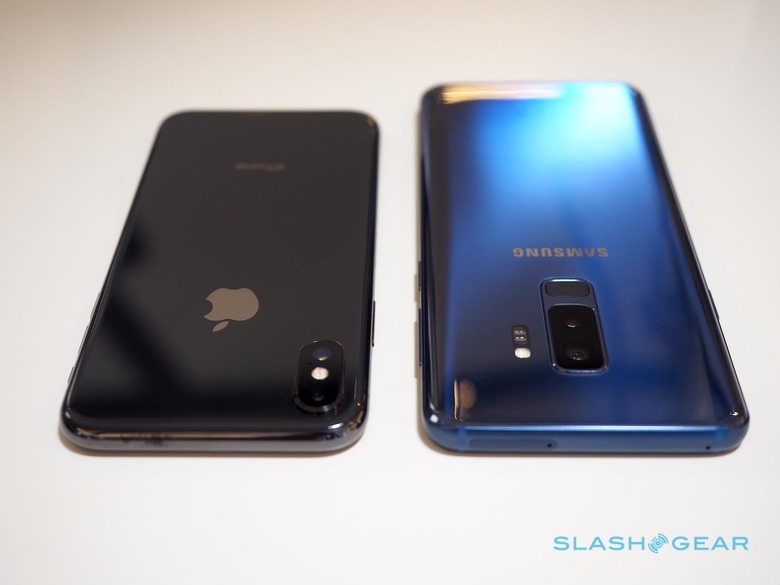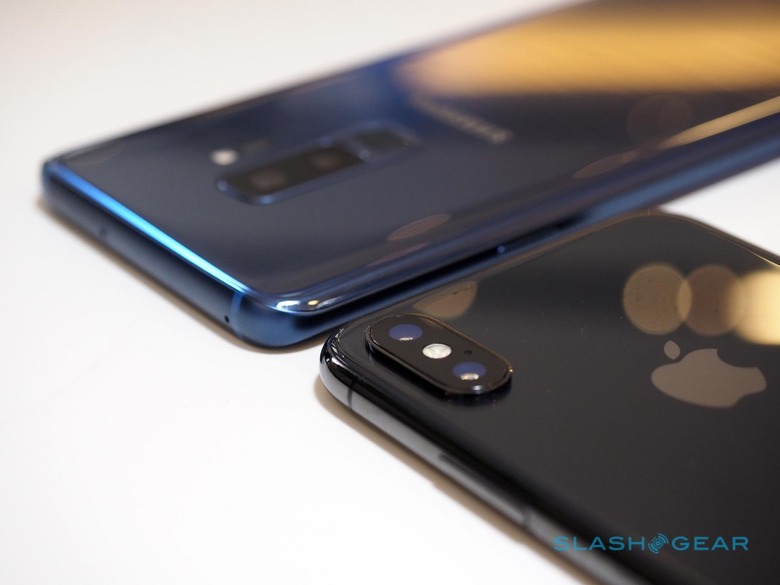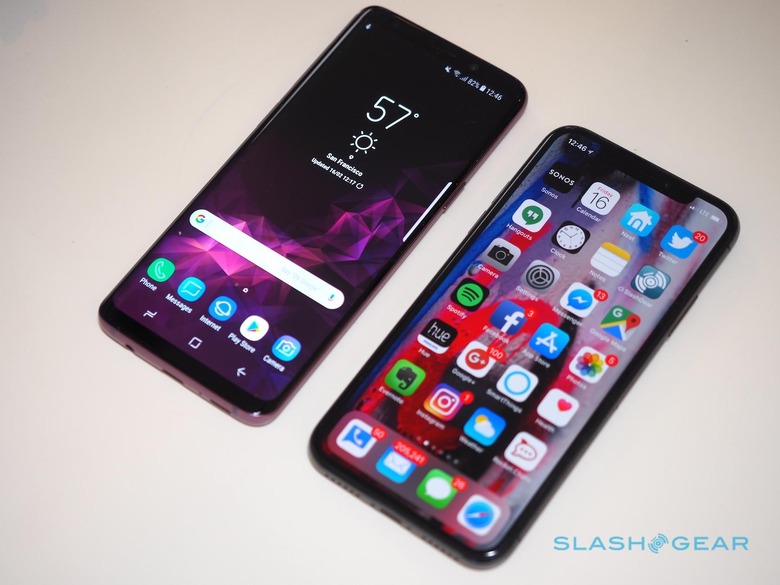Galaxy S9 Vs iPhone X: Has Samsung Done Enough?
The iOS versus Android battle is really a different question: are you iPhone, or are you Samsung Galaxy? Right now, with the covers finally lifted off the Galaxy S9 and S9+, that question is, more specifically, whether either of Samsung's newly-debuted smartphones are sufficiently appealing to drag your attention away from the iPhone X.
It's fair to say that 2017 was a big year for Apple. For the tenth anniversary of the iPhone, the company gave the smartphone its biggest shake-up so far. Gone was the familiar home button, out went LCD, and Touch ID bid adieu. In their place we got the iPhone X.
It's also fair to say that it hasn't been met with universal acclaim. For everybody who loves the narrower bezels, there's someone to criticize the "notch" at the top of the screen. That accommodates the Face ID sensor, of course, and for every person who loves Apple's new biometric system, there's someone else to hate it.
From that perspective, Samsung's more evolutionary update for its 2018 flagship arguably makes a lot of sense. The Galaxy S8 was, the company tells us, its most popular Galaxy S-series design so far. Its camera performance is still discussed in glowing terms, even alongside much newer handsets. Samsung's curved Super AMOLED screens are top-notch. Rather than throw all that out, the Galaxy S9 and S9+ massage them into something just that little bit better in each respect.

Size-wise, both of Samsung's devices are still larger than the iPhone X in your hand, though it's a close call on the S9. You have the choice of narrower side bezels but thicker top and bottom bezels on the Galaxy S9 and S9+, or the converse on the iPhone X. Of course, Apple's phone also has that notch, which most users find blurs into the background after a short period of use, but which still looks odd at first glance.
The Galaxy duo's front facing camera system isn't as complex as the TrueDepth camera that the iPhone X debuted. Samsung has hitched its iris scanning and facial recognition together into a single system it calls "intelligent scan," and which it promises is faster and less light-dependent than iris recognition but more secure than the laughably easy-to-fool face identification on the S8. Even so, it's questionable whether that's going to be tougher to crack than Face ID on the iPhone X.
In the S9 and S9+'s favor is the – thankfully repositioned – fingerprint scanner on the back, for those who still want to use their fingerprint, not their face or eyes. Apple, meanwhile, seems determined to do away with Touch ID altogether.

When it comes to software, Samsung's customized twist on Android still has the edge around things like multitasking. Being able to show two apps on-screen simultaneously can be a big help if you're trying to pick out details from a website to fill into a document, for example, or figure out an appointment on your calendar while holding an IM conversation. The side-swiping task switching gesture on the iPhone X is, when mastered, a lot quicker for jumping between apps than Apple's old system was, but it's still not quite as effective as just seeing both apps at the same time.
The biggest question – and still the biggest uncertainty – will be the camera. On the iPhone X, Apple opted for a dual lens system: one regular sensor, and the other with a 2x telephoto lens for optical zoom. Combined they can shoot Portrait-mode images with background blur.
The Galaxy S9 and S9+ are a little more complicated. The S9+, like the Note 8 before it, has a second camera on the back with the same 2x optical zoom capability as the iPhone X, along with faux-bokeh. However, both phones have something the iPhone X does not: switchable apertures on their main cameras.

Rather than the f/1.8 lens on the iPhone X, the Galaxy S9 and S9+ have a choice of two focal lengths. There's f/1.5, which Samsung says is for low-light situations, and f/2.4, for daylight scenes. The camera app automatically switches between them, or you can do so manually in the Pro mode.
Typically, smartphone camera have been pushing for lower and lower focal lengths, on the understanding that they'll allow for more light: that's vital, when you're dealing with relatively tiny camera sensors. However there's something to be said for a higher focal length, too. If you can supply it with sufficient light, the larger depth of field – the distance between the nearest and furthest objects in the scene that are in focus – can make for a more flexible camera.
To figure out how true that is, though, we'll need to put the Galaxy S9 through its paces in our full review. Stay tuned for that, as there may not be as long to wait for it as you might think.
The specter already looming over the Galaxy S9 and S9+ will be Apple's 2018 iPhone range. They're not expected until later in the year, but the rumors are already coming thick and fast as to what we can expect. Perhaps most pressing for Samsung is that Apple is almost certain to introduce what will be a direct competitor to the Galaxy S9+.

Currently, with the iPhone X and Galaxy S9 so similar in size, they're natural rivals. You could argue that the larger Galaxy S9+, however, doesn't have such direct competition: physically, it's more akin to the iPhone 8 Plus in your hand or pocket, but it has a far bigger screen.
Apple, though, is expected to address that with what's being referred to unofficially as the iPhone X Plus. Effectively the design language of the current iPhone X, but with a 6.5-inch display, it would actually come in larger than the 6.2-inch Galaxy S9+. Indeed, it would offer even more touchscreen than a Galaxy Note 8.
How appealing that is, we'll have to wait and see. There's an argument to be made that Apple will need to borrow multitasking and productivity tweaks from the iPad on the iPhone X Plus, if it's to really make the most of such a large display. For the moment, if you're deciding between the Galaxy S9 and the iPhone X, there's no simple way to make that decision. Samsung's unusual camera arrangement could well swing it in the S9's favor.
